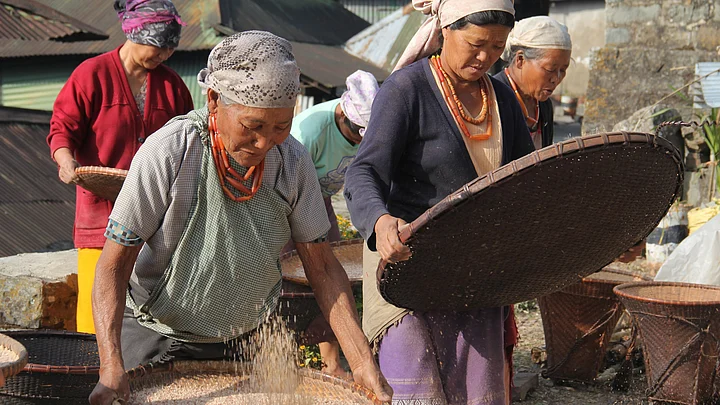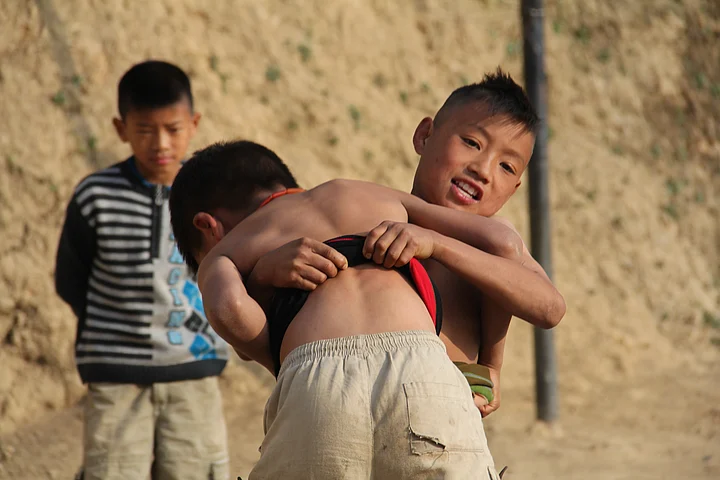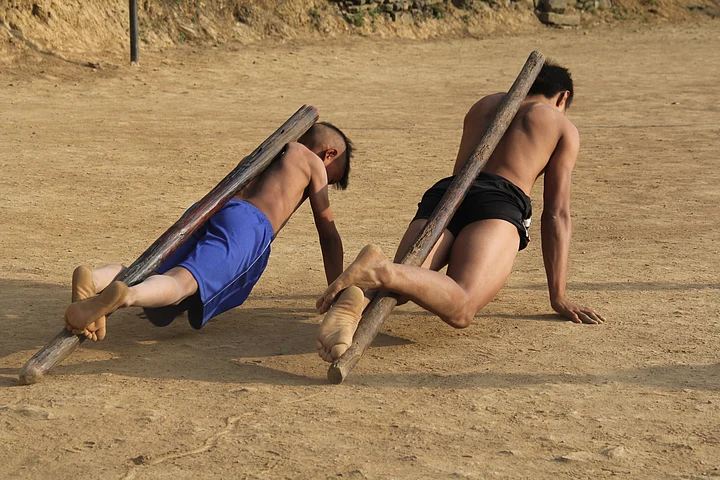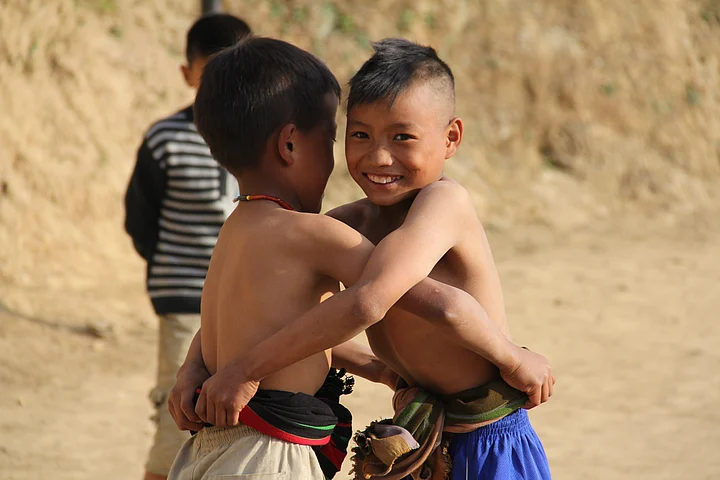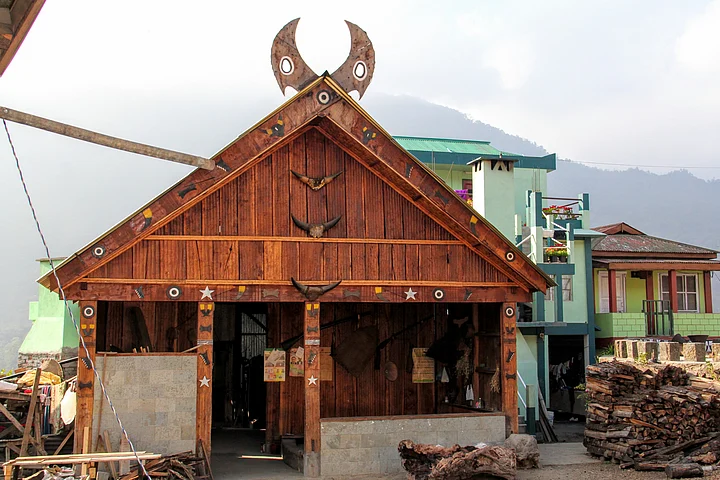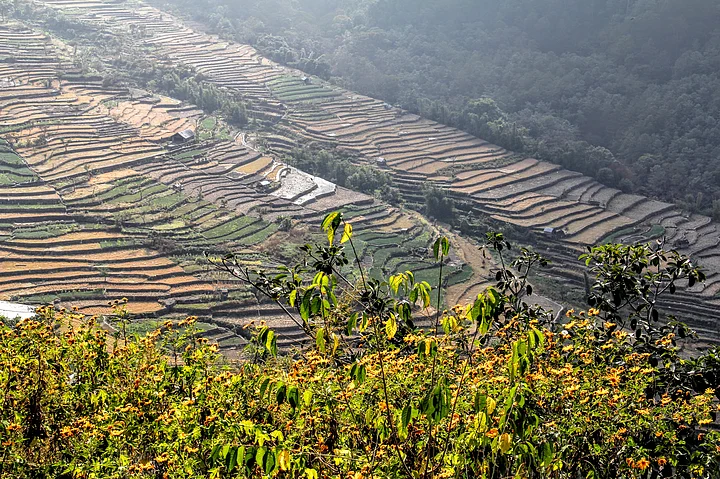From the noisy and crowded streets of Nagaland’s capital city Kohima, we careen around tortuous roads and craggy mountains overlooking paddy fields, till we arrive at a huge gate, made of wood and cement.
Standing tall at the entrance of the village, it greets you with the sign "Welcome to Khonoma".
Close by, is a large stone marker with an inscription attributed to the first federal president of Nagaland: “Nagaland will never be a part of India. Their territory is not a part of the Indian union. We shall uphold and defend this unique truth at all costs and always.”
Khonoma Village’s Unique Agricultural Methods
For many years, Khonoma, perched on a rocky spur, 20 miles from Kohima, has been known to take bold steps when it comes to protecting Naga identity and heritage, and is also known as Asia’s first green village. It has resisted the British and the Indian army during times of insurgency.
Khonoma is also famous for its unique take on agriculture. Shifting cultivation or jhum (slash-and-burn) is a well-known practice in the hilly northeastern states, where forest patches are cleared for agriculture, leading to soil erosion and acute water shortage. In Khonoma’s form of jhum, Alder trees are grown with the crops, recharging the nitrogen levels in the soil and preventing soil erosion, besides also serving as a firewood source.
They also grow paddy fields in the foothills so that water from the forests (that runs down) can be utilized.
As we whizzed past the green village lanes, children, young and old greet us with warm smiles.
Rustic wooden houses with mud floors and bamboo walls, and tombstones stand side by side here in this charming little village. Perched on a hill overlooking terraced paddy fields, Khonoma is home to the Angami Nagas, an indigenous warrior tribe. A winding cobbled path adorned with red poinsettias and wild lilies runs through the spick-and-span village. The village is divided into three hamlets, with each safeguarded by its own fort.
The Environment-Conscious Angami Tribe
It’s a Sunday, and we see members of the Angami tribe stream down from a church on a hill side, with their colourful patterned shawls. We enter the village behind the large Catholic Church from the 1950s, and up to a small road junction located on the saddle of the ridge line.
We climb the stairs along the ridge line to a stone arch, and traditional gateway called the Karu. It is carved with auspicious markers including circles representing the sun and dao (the Naga machete – used for agriculture and tribal warfare) and a Mithun head (a wild cross between an ox and a buffalo).
This village of the Angami tribe (one of the 16 tribes in Nagaland), has emerged as a "green village", setting itself as an example to be followed by the rest of Nagaland, when it comes to protecting its ecological heritage.
Faced with widespread deforestation, the environmentally-conscious people of the village decided to put a total ban on logging and hunting in 1998, a first of this kind in Nagaland. The villagers also are to conserve an endangered pheasant of the state, and rich flora and fauna resources. The village believes in community driven eco-tourism, and hosts tourists, showcasing its rich natural and cultural heritage, offering home stays.
Work Shared Between Men And Women
We move further into the village, clambering up a huge stairway built by the village youth from rocks collected from nearby mountains. From here, Khonoma looks like a green zigzag puzzle, with terraced paddy fields below. The stairway leads to a white pillar that commemorates the death of British officials who lost their lives fighting against the Naga warriors in 1879.
I wander through the village, making my way through chickens, ducks and curious kids following me, looking at small kitchen gardens, attached to each house growing squash, potatoes, carrots and other vegetables. Pomelo trees luscious with fruit, line the streets.
I watch old wizened men and women with bamboo baskets strapped on to their backs, carrying rice and household goods, climbing the stairs effortlessly. Balconies burst with orchids in different hues. We pass the backyard of a home where several women are threshing grain – “Probably a wedding in the family,” remarks my guide, Zabu.
Every home has a pig sty –“A fattened pig can be sold for as much as Rs 15,000,” says Zabu. We meet local resident Kevi Kate who is weaving a basket, that locals use to carry rice or their belongings on their backs. He takes almost two and a half weeks to finish weaving one, and he makes about 7,000 rupees. Close by are his five rosy-cheeked children in grubby clothes peeling wild apples from his home garden – they have learnt to peel, cut it and dry it, selling it in small packets.
Children Trained to Play Traditional Games
What I really enjoy among all my experiences at the village is the small display of indigenous games that Zabu has arranged with his local friend Roco, who has a degree in physical education from Dibrugarh in Assam. He trains the local youth to play traditional games which are dying out – I see bouts of Naga wrestling, a peculiar crawling race called Kemu Pfuta with a pestle used for threshing rice (held between the legs expertly, while crawling on the ground), and stone jumping – jumping to a great height against a stone wall.
I walk with Zabu down a trail through the village peppered with interesting stories that unfold at every corner. There are local homesteads called morungs where a child joins a group, hosted by a village superior, and bonds with him. Under his tutelage he stays there, engaging in physical training, sports, moral and social education, preparation for warfare, singing, dancing and folklore. Inside the morung are skulls and horns of bears, deer, boars and other animals, the roof beams and walls are darkened with soot built up from numerous cooking fires.
‘Feasts of Merit’
Zabu tells me about a local custom, “Feasts of Merit”. It is an honour to give a feast of merit which translates into hosting a feast for the whole village. The person has to give away all their wealth, keeping only a small house, farming equipment and a pair of mithun (a cross between a bison and a cow) in the stable. When one gives a feast of merit, he is worthy of adorning his headgear with the feathers of a hornbill (a most revered bird among tribals).
I have lunch at Zabu’s aunt’s home where she lays out a simple meal of local greens, dal and red rice, overlooking a landscape of terraced rice fields. More than twenty varieties of rice are grown in these fields surrounding the village.
I have a meal of vegetable soup with fermented bamboo shoot curry, wild mushrooms, red rice, dal, red and white pumpkin, mixed vegetables, and boiled mustard leaves. Post lunch, I sit on the parapet and look at the picture of bucolic bliss spread out beneath my feet. Terraced hills, the valley below and small houses and the mountains in the background. I wish I could bottle this tranquility and take it back with me to the urban jungle.
(The author is a freelance luxury travel and lifestyle writer, blogger and photographer based in Chennai, where she also works as a freelance Japanese language interpreter and teacher. Her work has been featured in The Hindu, The New Indian Express, Hindu Business Line, The Deccan Herald, and Conde Nast India (Digital), among others. She tweets at @KalpanaSunder . The views expressed above are the author’s own. The Quint neither endorses nor is responsible for them.)
(At The Quint, we question everything. Play an active role in shaping our journalism by becoming a member today.)
